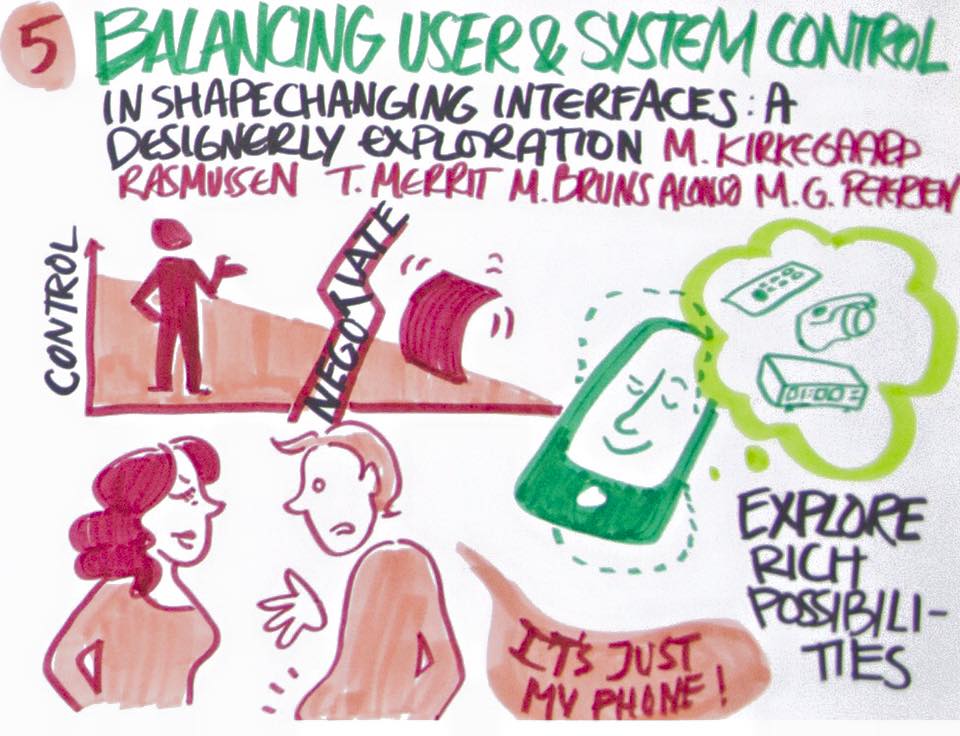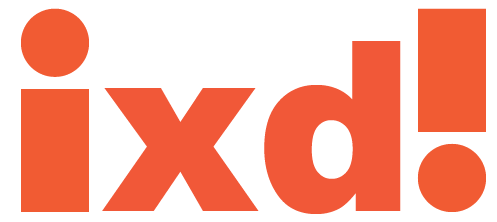
When mobile phones can change shape, how should we control them?
In this work, we propose a framework for sharing control of shape change events. The framework considers whether the shape change is: 1) directly controlled by the user’s explicit interactions; 2) negotiated with the user; 3) indirectly controlled by the users actions; 4) fully controlled by the system. The four types are described through design examples using ReFlex, a shape-changing interface in the form of a smartphone. The paper concludes that shape-changing interfaces tend to assign the control to either the user or the underlying system, while few (e.g. [16,28]) consider sharing the control between the user and the system.
The visual facilitator at the TEI2016 conference summarized the work in the following sketchnote:
 Majken Kirkegård Rasmussen, Timothy Merritt, Miguel Bruns Alonso, and Marianne Graves Petersen. 2016. Balancing User and System Control in Shape-Changing Interfaces: a Designerly Exploration. In Proceedings of the TEI ’16: Tenth International Conference on Tangible, Embedded, and Embodied Interaction (TEI ’16). ACM, New York, NY, USA, 202-210. DOI=http://dx.doi.org/10.1145/2839462.2839499
Majken Kirkegård Rasmussen, Timothy Merritt, Miguel Bruns Alonso, and Marianne Graves Petersen. 2016. Balancing User and System Control in Shape-Changing Interfaces: a Designerly Exploration. In Proceedings of the TEI ’16: Tenth International Conference on Tangible, Embedded, and Embodied Interaction (TEI ’16). ACM, New York, NY, USA, 202-210. DOI=http://dx.doi.org/10.1145/2839462.2839499

